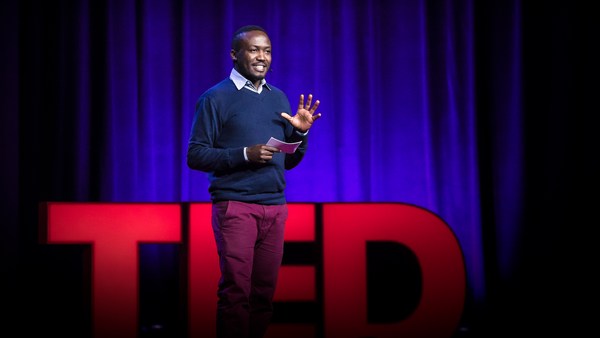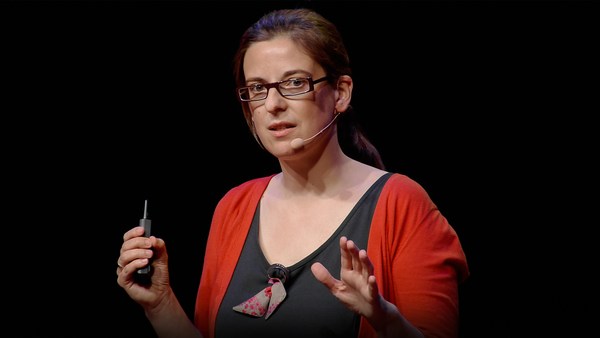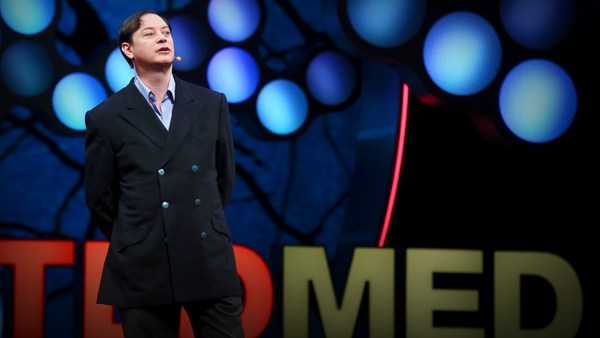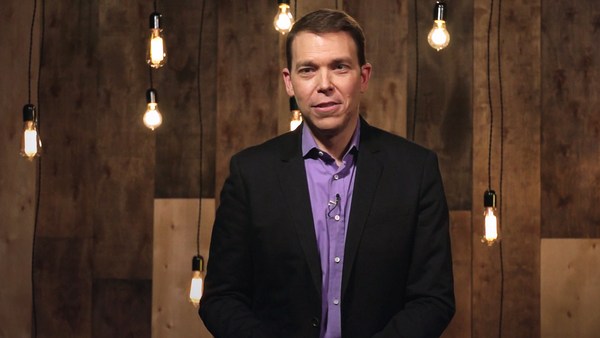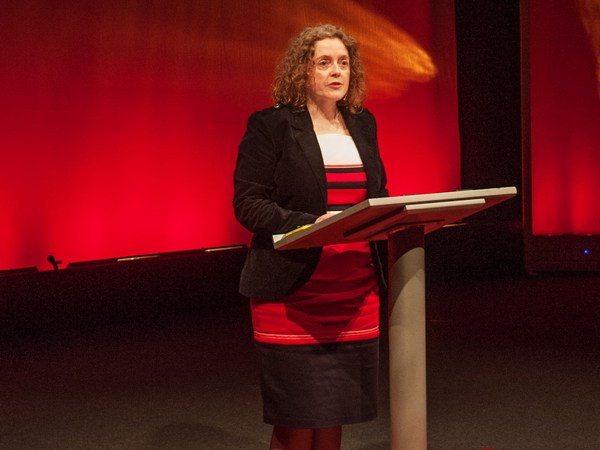When I was three years old, I was transracially adopted from South Korea by a white family in Salt Lake City, Utah. I arrived in America with a mysterious tattoo on my left forearm. The tattoo was so large and noticeable that my adoptive parents had it surgically removed right away. They were worried that other kids would make fun of it. Today, there's only a light scar where the tattoo once was, so I've redrawn it in permanent marker so you can see what it looked like.
Korean adoption records in 1976 were notoriously incomplete. I didn't have any information about my background or my birth family. I didn't even know if my name or birth date were real or if they were assigned. And no one knew what my tattoo meant. Transracial adoption is where a child from one race or ethnicity is adopted by parents from a different race or ethnicity. In my generation, children who were adopted from Korea were assimilated into the culture of their adoptive parents. So I was raised as if I were white. Growing up, occasionally my family would eat at a Korean restaurant, or we'd go to the Asian festival. But I did not identify with being Asian.
Looking back now, having my tattoo removed is symbolic of losing a connection with my Korean ethnicity and culture. And I am not alone. Since the 1950s, almost 200,000 Korean children have been adopted all over the world. A growing body of research shows that children experience trauma when they're separated from their families of origin.
My story includes such childhood trauma. I recently found out that my birth mother left my family shortly after I was born. When I was two years old, my birth father became injured and could not provide for my brothers and me. And so my two older brothers and I were sent to children welfare services. And there, someone decided, because I was younger, that I was more adoptable. And so, I was sent to a separate orphanage, separated from my brothers who cared for me. My adoption records say that I wouldn't play with any of the other children at the orphanage, and now I know why. My adoption photos show the picture of a frightened, malnourished little girl.
Just imagine my culture shock a short and lonely nine months later, as I arrived in America, where everything was different: the people, the buildings, the food and the clothing. As a three-year-old child, I quickly figured out that no one spoke the Korean language that I spoke, and so I stopped speaking altogether for six months. And when I started speaking again, it was in full English. One of the first phrases I said as my parents showed me my orphanage photos was, "Sara sad."
Children who are adopted often put up emotional walls to protect themselves from being hurt again. I certainly did this, and like many transracially adopted children, there were many moments growing up where I wished that I was white like the other kids around me. Other kids made fun of my eyes and nose. Now, the '80s styles were particularly brutal to me, with glasses that didn't fit well, hairstyles --
(Laughter)
that looked ridiculous on me.
(Laughter)
This narrative of adoption might be uncomfortable for you to hear. The narrative that we usually hear is that of a new parent, who is eagerly awaiting a child that they've been wanting for so long. The parents' story is told with love, joy and excitement, and as they bring a newly adopted child into their home, family and friends celebrate and congratulate the parents on their wonderful decision to adopt. My parents' adoption story was like a beautiful blanket that kept me warm. But after a while, it felt like the focus was more on the blanket, covering me and my point of view entirely. I couldn't emotionally breathe.
My parents would say things to me like, "I fell in love with you the first time I saw your photo. My heart broke." They love me, I know that, and I was wanted. But I wish that the only birth story I had wasn't so sad, so humanitarian. I would often confuse love with gratitude, especially when other people would say things to me like, "You're so lucky to be adopted to America," or, "Your parents are such angels to adopt you." To a child, it felt like these comments were constant reminders to be grateful to my parents' charity. I resented that I couldn't tell these adults, "I don't like being reminded all the time that I'm adopted. I just want to be a normal kid, and maybe even be ungrateful once in a while."
(Laughter)
But I learned to smile without really smiling, and as I grew older, I wanted to be able to say, "Sara is still sad." But I buried my feelings, and it wasn't until later in life that I realized I'd never really grieved my own adoption.
While many of us understand that adopting a child from a different race, culture or country is never simple, we rarely acknowledge the complex emotions that children who are adopted can experience. Some children experience feelings of loss, feelings of rejection, grief, shame, guilt, challenges with identity, difficulty with intimacy and control issues. Just ask my kids.
(Laughter)
Children who are adopted can still love their adoptive parents at the same time as experiencing these complex emotions. And many of us wonder: If we had had safe emotional spaces to own our own stories when we were younger, would we still be struggling to come to terms with adoption as adults? Where do we find the emotional oxygen to own our own stories?
Since the late 1990s and early 2000s, researchers like Dr. Richard Lee have focused on different parenting techniques for transracial adoption. The hope is to help children and their adoptive parents better adapt to their unique racial and ethnic circumstances. There's more enculturation encouraged, that exposes children to the people, places, languages and culture of their birth families. Some parents focus on racial inculcation to specifically work with their children on the racism and discrimination that they will experience outside of the home. And some parents allow children to choose as they get older the level of exposure to the culture of their birth families. Now, we might look at these signs of progress and think we've got it all figured out when it comes to transracial adoption.
The Korean adoptees were the first massive wave of international adoptions, almost 30 years earlier than most other countries, and so there are entire generations of Korean adoptees -- from children all the way to adults in their 70s -- dealing with the impact of their assimilation, and there have only been a handful of studies that follow transracial adoptees over a lifetime.
I know that people around me could not understand my adoption grief. Rachel Rostad, another Korean adoptee, expressed what I was feeling when she said, "Loss is especially confusing to measure when it appears as if I haven't lost anything at all. It's not missing like an organ. It's missing like wherever dreams go when you blink awake into the morning light." Every year, hundreds of South Korean adoptees search for their birth families. Korean agencies report that less than 15 percent are successful.
Last year, I found my Korean birth family in just three months. I posted a photo of my redrawn tattoo on social media, which Korean groups generously shared. And a friend of my brother saw the photo, and he knew instantly what the tattoo meant. When my father decided to send us to children welfare services, he was worried that we would be separated and even adopted into foreign countries. And so he took the unusual step to place a large tattoo on each of our arms and on his own, so that we could find each other someday. And he tried searching for me. And he was right: the tattoo did eventually lead me to find the family that I had lost. Unfortunately, he passed away nine years before he could see his children reunited.
But last year, I traveled to Korea to meet my two older brothers, my aunt and uncle, and I learned a lot of new things about myself, including my real birth date, which actually makes me seven months older.
(Laughter)
This middle-aged woman did not love hearing that she is older.
(Laughter)
And that explains all those gifted and talented classes I had in school.
(Laughter)
But the most important thing that I learned was that I had a loving family in Korea who remembered me as a little baby and had never forgotten me. I wasn't abandoned, like my adoption records said. I was wanted.
It's time to reframe our views on adoption. A healthy adoption ecosystem is one in which children, adoptive families and birth families each own their unique stories. When these narratives are placed side by side, it creates better empathy and policies for the lives that adoption impacts. Here are two things that adults can do to better protect adopted children's stories.
First, give children safe emotional spaces to express their emotions, both positive and negative. Phrases such as "tell me more," "what do you wish for" and "those feelings are normal" are ways that parents can grant emotional oxygen to their children.
Second, validate a child's adoption story. Children may express emotions that may feel hurtful or worry an adoptive parent. As a parent, work to hold and manage your fears separately from your child. Always acknowledge your child's story as valid and important.
Now, it's natural to want to protect children from experiencing pain. But my tattoo is a poignant reminder that every adoption starts with loss, and every child is affected differently. Children who are adopted can live full, rich lives, as we accept and build upon this unique set of cards that we were dealt. And as you listen to our narratives with empathy, you will hear other things as well: childlike curiosity, grace, resilience, courage, love and yes, even gratitude.
Thank you.
(Applause)
